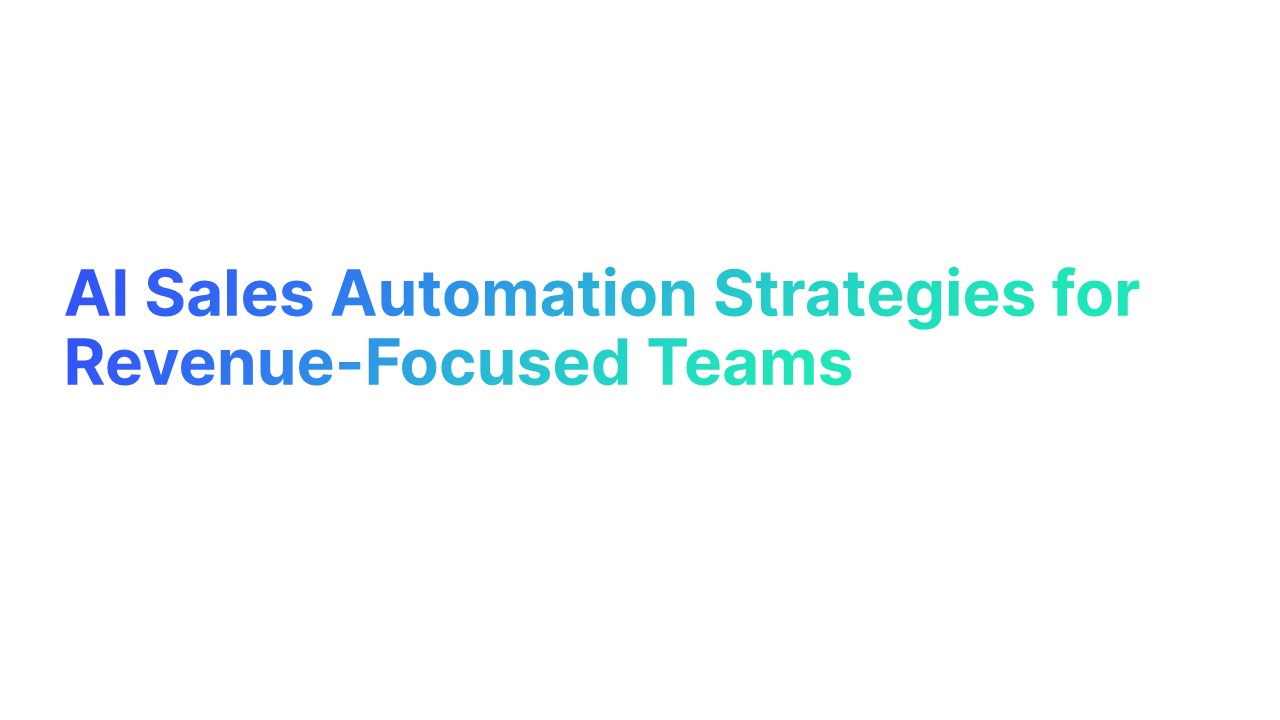How to Write the Perfect Sales Emails

Writing sales emails that stand out in a crowded inbox requires a strategy that balances personalization, value, and clarity.
Here's your guide to creating emails that not only get opened but also convert.
Understand Your Audience
Initial Insight: Dive deep into who your audience is. It's about grasping their challenges and the solutions they're seeking.
- Personalization: Customize your message to address their specific needs.
- Why It Works: Tailored messages are 26% more likely to be opened, according to Campaign Monitor.
Craft a Compelling Subject Line
First Steps: Your subject line acts as the gatekeeper to your email's content.
- Urgency and Curiosity: Use these elements to compel readers to open the email.
- Data Point: 47% of email recipients open an email based on the subject line alone (OptinMonster).
Open with a Bang
Engagement Strategy: The first few lines should immediately capture attention.
- Question or Fact: Start with something that speaks directly to their pain points or interests.
- Effectiveness: Emails with personalized opening lines can increase open rates by over 22% (HubSpot).
Deliver Value
Core Principle: Clearly articulate the value proposition.
- Solutions Over Sales: Focus on how your product or service solves their problem.
- Rationale: Emails that provide immediate value have a higher click-through rate, with a benchmark of around 3.2% across industries (Mailchimp).
Personalize Your Message
Beyond Basic Personalization: Deepen your connection by referencing their recent achievements or specific interests.
- Custom Tailoring: Use data from LinkedIn or company websites to personalize further.
- Impact: Personalized emails deliver 6x higher transaction rates (Experian).
Keep It Short and Sweet
Importance of Brevity: Respect the reader's time by getting to the point.
- Conciseness: Aim for an email length of 50-125 words for optimal engagement.
- Why: Emails of this length have a response rate of over 50% (Boomerang).
Include a Clear Call to Action (CTA)
Call to Action: Direct the reader clearly on what to do next.
- Clarity and Simplicity: Ensure the CTA is straightforward and easy to find.
- Significance: A single, clear CTA can increase clicks by 371% and sales by 1617% (WordStream).
Follow Up Wisely
Persistence with Tact: Timing and content are crucial in follow-up emails.
- Value-Added Follow-Up: Offer new information or a special incentive.
- Strategy: A series of 3-5 follow-ups is optimal, with a 7-day interval showing the best engagement (Yesware).
Use Visuals When Appropriate
Visual Engagement: Incorporate relevant charts, infographics, or videos to complement your message.
- Selection Criteria: Ensure visuals are directly related to your message and add real value.
- Why Visuals: Content with relevant images gets 94% more views than content without (Skyword).
Test and Refine
Iterative Process: Continuously test different elements of your emails.
- A/B Testing: Experiment with subject lines, email length, and CTAs to discover what works best.
- Continuous Improvement: Use analytics to guide your refinements, aiming for higher open and conversion rates.

35 Ready-to-Use Sales Email Templates

Cold Outreach Sales Templates

Template 1: Introduction & Value Proposition
Why It Works: This template captures the reader's attention immediately with a bold promise, then quickly offers a value proposition that is relevant to the recipient's industry. By mentioning a notable company that has seen success, it builds credibility and fosters interest. The email concludes with a clear call to action, inviting the recipient to learn more, effectively applying the AIDA model.
Template 2: Industry-Specific Solution Offer
Why It Works: This template works because it speaks directly to the recipient's industry-specific needs and challenges, making the offer more relevant and compelling. Mentioning industry leaders who have benefited from the service adds a layer of trust and aspiration, motivating the recipient to take action.
Template 3: Competitor Comparison
Why It Works: This template effectively grabs attention by bringing up a competitor, creating a sense of urgency. It differentiates the offered product/service from others in the market, highlighting its unique benefits. The template ends with a compelling call to action, encouraging the recipient to engage and stay competitive.
Template 4: Case Study Share
Why It Works: Sharing a case study provides concrete evidence of the product/service's effectiveness, making the value proposition tangible and credible. This template builds desire by demonstrating real-world success and concludes with an invitation to discuss the recipient's own goals, making it highly personalized and actionable.
Template 5: Free Trial Invitation
Why It Works: This template entices the reader with a no-obligation offer, making it an easy decision to explore the product/service further. Highlighting the main benefit and backing it up with a success story from a notable company creates interest and credibility, encouraging the recipient to take advantage of the free trial offer.
Template 6: Feedback Request on Content/Tool
Why It Works: Asking for feedback makes the recipient feel valued and respected for their expertise, fostering a sense of collaboration. This template is effective because it personalizes the request by acknowledging the recipient's involvement in the field and positions the content/tool as a resource developed for their benefit.
Template 7: Webinar Invitation
Why It Works: This template captures attention by offering exclusive, industry-specific learning opportunities and the chance to interact with experts. The clear description of the webinar's value and the urgency to secure a spot motivate the recipient to register, leveraging the appeal of gaining new knowledge and direct expert access.
Template 8: Recent Achievement or Milestone
Why It Works: Sharing a recent achievement or milestone builds credibility and trust by demonstrating the company's growth, success, and commitment to excellence. It creates a positive association with the product/service and invites the recipient to be part of the company's journey, fostering a sense of community and partnership.
Template 9: Product Update Announcement
Why It Works: This template effectively communicates the continuous improvement of the product/service, highlighting the company's responsiveness to user feedback. By detailing the specific updates and their benefits, the email reinforces the value proposition and encourages the recipient to explore the new features, keeping them engaged and invested in the product.
Follow-Up Sales Templates

Template 10: After Initial Contact
Why It Works: This template maintains momentum from the initial contact by directly referencing points from the conversation. It's personalized and shows genuine interest in helping the recipient achieve their goals, encouraging further engagement.
Template 11: After a Networking Event
Why It Works: This template builds on the personal connection made at the event, reminding the recipient of the value you bring. It's friendly and proposes a clear next step, making it easy for them to engage.
Template 12: Checking In Email
Why It Works: This follow-up is considerate and timely, showing that you remember details about the recipient's projects and challenges. The mention of a new feature or service renews the value proposition and prompts a reason to reconnect.
Template 13: After a Referral Introduction
Why It Works: Leveraging the trust established through a mutual connection, this template respectfully acknowledges the referral and directly addresses how your product/service can meet their needs. The call to action is clear and anticipates a positive collaboration.
Template 14: Resource Follow-Up
Why It Works: This template follows up on provided resources, reinforcing your commitment to offering value and support. It's helpful and non-intrusive, focusing on the recipient's needs and interests while gently nudging them towards further engagement.
Re-Engagement Sales Templates

Template 15: We Miss You
Why It Works: This template taps into the emotional aspect of missing a valuable customer, showing that their absence is felt. It opens the door for feedback, demonstrating willingness to improve and tailor the experience to their needs, which can reignite their interest.
Template 16: Feature Update Re-Engagement
Why It Works: Directly highlighting new features that address past concerns or needs shows that you listen to your users and continually improve your offering. This personalized approach can rekindle their interest and encourage them to re-engage with your product/service.
Template 17: Feedback Request for Improvement
Why It Works: Requesting feedback makes the customer feel valued and shows that their opinions can directly influence improvements. This respectful and open approach can reignite their interest and potentially bring them back as active users.
Template 18: Special Offer for Coming Back
Why It Works: Providing a tangible incentive can be a strong motivator for lapsed customers to re-engage. The exclusive offer, combined with the promise of improvements, creates a compelling reason to return and experience the updates, enhancing customer retention.
Template 19: Anniversary/Birthday Email
Why It Works: This template creates a personal connection by acknowledging and celebrating the customer's special day, making them feel valued and appreciated. The inclusion of a special offer not only serves as a thank you but also encourages re-engagement and repeat business, fostering loyalty.
Template 20: Industry News Update
Why It Works: This template positions your company as a thought leader and valuable resource within the industry by sharing relevant news and trends. It demonstrates your interest in the customer's growth and success, beyond just selling a product or service. Keeping customers informed and engaged with industry insights can strengthen the relationship and encourage continued interaction with your brand.
Transactional Sales Templates

Template 21: Welcome Email for New Customers
Why It Works: This template warmly welcomes new customers, instantly making them feel valued and part of a community. By highlighting benefits and providing resources to get started, it encourages engagement and sets the tone for a positive relationship.
Template 22: Order Confirmation
Why It Works: This template reassures customers with a clear, concise overview of their order details, enhancing trust and transparency. Providing an order tracking link also improves the customer experience by allowing them to stay informed about their purchase.
Template 23: Shipping Notification
Why It Works: It provides immediate, valuable information about the shipment, including how to track it, which enhances the customer's anticipation and satisfaction. Clear communication about delivery details shows efficiency and customer care.
Template 24: Order Delivery Confirmation
Why It Works: Confirming delivery adds a layer of satisfaction for customers, closing the loop on the transactional process. It also opens the door for further engagement, support, or feedback, enhancing the overall customer experience and fostering loyalty.
Template 25: Subscription Renewal Reminder
Why It Works: This template provides a clear, concise reminder of the upcoming subscription renewal, making it easy for customers to know what to expect. Offering an easy path for adjustments or questions demonstrates customer care and flexibility, encouraging continued loyalty.
Template 26: Invoice Email
Why It Works: This template clearly presents all the necessary invoice details along with a respectful reminder of the payment due date. By attaching the invoice and providing contact information for inquiries, it simplifies the payment process and reinforces a professional relationship.
Template 27: Payment Receipt Confirmation
Why It Works: Acknowledging the receipt of payment immediately reassures the customer that their transaction has been processed successfully. Providing a summary of the payment details adds transparency and trust, while expressing gratitude strengthens the customer relationship.
Upsell/Cross-Sell Sales Templates

Template 28: Product Upgrade Offer
Why It Works: This template focuses on the natural progression from the customer's current satisfaction to an even better experience. Highlighting specific benefits and offering an exclusive discount makes the upgrade appealing and personalized.
Template 29: Complementary Product Offer
Why It Works: Offering a product that complements the customer's existing purchase demonstrates understanding of their needs. A special discount and free integration service further incentivize the purchase, making it a compelling offer.
Template 30: Exclusive Bundle Offer
Why It Works: This template presents a cost-effective solution by bundling products/services, emphasizing the comprehensive benefits and exclusive nature of the offer. It appeals to the desire for savings while obtaining a full suite of tools or services.
Template 31: Loyalty Program Invitation
Why It Works: This template acknowledges and rewards the customer's loyalty, offering them tangible benefits through a loyalty program. It creates a sense of exclusivity and appreciation, encouraging continued engagement and purchases.
Template 32: Customer Anniversary Offer
Why It Works: Marking the customer's anniversary with your brand personalizes the relationship and reinforces their decision to choose your company. An exclusive offer adds value to the celebration, fostering loyalty and encouraging repeat business.
Educational Content Sales Templates

Template 33: How-To Guides for New Customers
Why It Works: This template warmly welcomes new customers and provides them with valuable resources to ensure a smooth start. By offering a how-to guide, it addresses potential questions and challenges upfront, reducing friction and enhancing the customer experience.
Template 34: Tips & Tricks for Product Use
Why It Works: This template educates existing customers on how to better utilize their purchase, adding value to their experience. It encourages continued engagement with the product and positions the company as a helpful partner in the customer's success.
Template 35: Industry Trends Newsletter
Why It Works: This template positions the company as a thought leader by providing valuable, curated industry insights that can impact the customer’s business. It reinforces the company's role as a proactive partner in the customer's growth, encouraging trust and ongoing engagement.
The Importance of Email Templates in Effective Communication

An Email template is a strategic tool that increases the clarity and impact of your message.
The importance of email templates in effective communication can be substantial in several ways:
Consistency Across Correspondence
- Builds Brand Recognition: Frequent exposure to consistent branding can increase revenue by up to 23% (Forbes).
- Establishes Trust: Consistency in communication helps to build a reliable brand image.
Efficiency in Communication
- Saves Time: Templates can reduce email creation time by up to 60%, optimizing workflow (Campaign Monitor).
- Streamlines Responses: Pre-drafted templates enable faster customer service replies.
Accuracy and Professionalism
- Reduces Errors: Templates act as a safeguard against the inclusion of incorrect information.
- Maintains Quality: With a set structure, the quality of information remains high.
Personalization at Scale
- Enhances Engagement: Emails with personalized subject lines are 26% more likely to be opened (Campaign Monitor).
- Tailored Content: Templates allow for customization, making each communication relevant to the recipient.
Measurability for Continuous Improvement
- Tracks Performance: Use of templates allows for the consistent application of analytics to measure engagement.
- Informs Strategy: Data gathered can inform future template adjustments for improved performance.
How to Write Subject Lines for Sales Email?
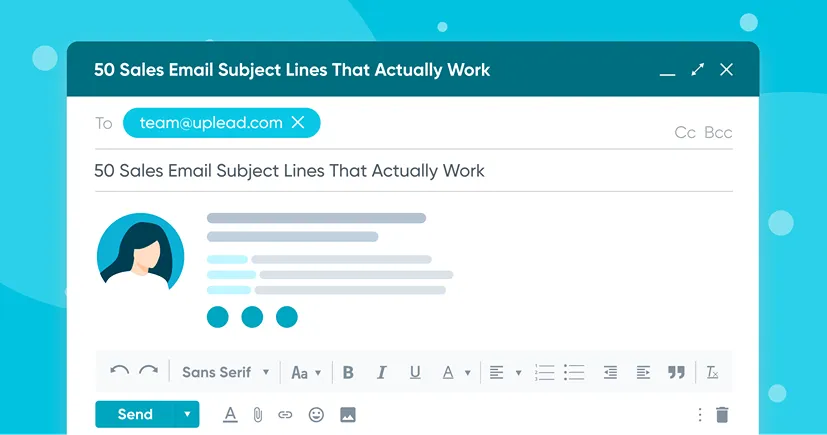
Crafting the perfect subject line for sales emails is an art that blends creativity with strategy. A compelling subject line serves as the gateway to your email content, determining whether your message captures interest or gets lost in the inbox clutter.
Here's how to strike the right balance:
Start with Clarity and Precision
The goal is to make an immediate impact. A concise, clear subject line sets the stage, telling your recipient exactly what to expect. It's the first step in engaging them.
- Length Matters: Aim for 30-50 characters to ensure your message is fully visible on most devices.
- Be Direct: Use straightforward language that speaks directly to the recipient's needs or interests.
Personalize Your Subject Line
Personal touches can significantly boost open rates. By making your email feel tailored to the recipient, you establish a connection from the outset.
- Use Names: Including the recipient's name or company can increase open rates by up to 20%.
- Tailor the Message: Reference a recent event or specific interest related to the recipient to make the email feel more relevant.
Create a Sense of Urgency and Curiosity

Creating a sense of urgency or invoking curiosity can encourage recipients to open your email sooner rather than later.
- Limited Time Offers: Phrases like "Ends Tomorrow" can create a sense of urgency.
- Ask Questions: Posing a question relevant to their interests or challenges can spark curiosity.
Have a Value Proposition
Clearly articulate the value or benefit your email offers. This is about showing the recipient what's in it for them.
- Highlight Benefits: For example, "Save 30% on Your First Order" directly communicates a tangible benefit.
- Offer Solutions: Use subject lines that address a problem or need, such as "Solve Your XYZ Challenge Today."
Testing and Optimization
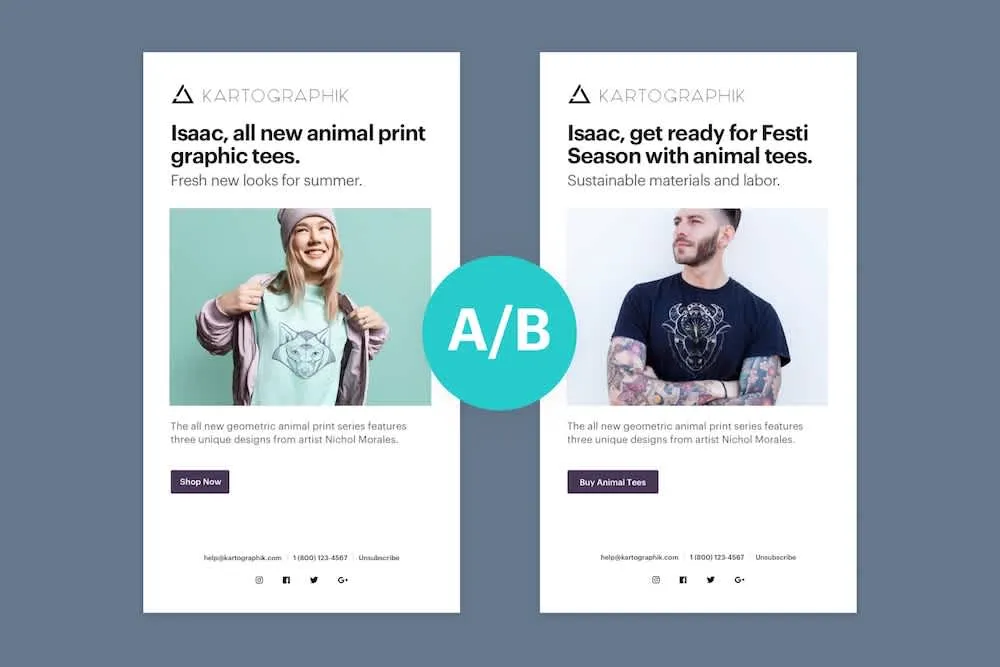
The only way to truly know what works best is through continuous testing and refinement of your strategies.
- A/B Testing: Experiment with different subject lines to see which performs better. Even a small change can lead to a noticeable difference in open rates.
- Analyze Results: Keep track of metrics like open rates and click-through rates to understand what resonates with your audience.
Avoid Common Pitfalls
Certain practices can decrease the effectiveness of your subject line, or worse, cause it to be marked as spam.
- Steer Clear of Spam Triggers: Words like "free," "guarantee," and excessive use of exclamation points can be red flags for spam filters.
- Accuracy is Key: Ensure your subject line accurately reflects the content of your email. Misleading subject lines can damage trust and credibility.
Understanding the Structure and Design of Your Sales Email Templates: HTML Text or Plain Text?

Deciding on the right format for your audience in email marketing campaigns—HTML or plain text—is pivotal for sales reps and sales professionals.
This choice influences the effectiveness of your communication, engagement levels, and ultimately, the success of your campaigns.
HTML Text Emails:
Advantages:
- Brand Consistency: Enhances brand recognition through logos, colors, and fonts.
- Engagement: Uses visual elements to attract attention and encourage action.
- Tracking Capabilities: Allows detailed analytics on user interactions.
Considerations:
- Requires thorough testing to ensure compatibility across email clients.
- Higher risk of being filtered as spam without proper optimization.
Plain Text Emails:
Advantages:
- Universality: Guaranteed readability across all devices and email platforms.
- Personal Connection: Mimics a direct conversation, potentially building stronger relationships.
- Deliverability: Lower risk of being marked as spam, increasing inbox placement rates.
Considerations:
- Lacks visual appeal, which can be crucial for certain types of content.
- Limited tracking options compared to HTML emails.
Which Format Suits Your Audience?
- A/B Testing: Experiment with both formats to identify which generates better engagement from your target audience.
- Content-Type: Consider the nature of your message. Use HTML for visually-driven content and plain text for personalized, relationship-building messages.
- Audience Preference: Some audiences may prefer the simplicity and authenticity of plain text, while others expect the dynamic content that HTML offers.
Integrating Blog Posts and Marketing Content:
- When sharing content like blog posts, HTML emails can effectively showcase highlighted articles or include engaging visuals and direct links, making it easier for recipients to engage with your shared content.
The decision between HTML and plain text should be guided by your audience's preferences, the type of message you're sending, and the goals of your email marketing campaigns.
Regularly reviewing your email campaign's performance metrics can offer insights into which format resonates more with your recipients, allowing you to tailor your approach for maximum impact.
Responsive Email Templates: A Necessity for Modern Email Marketing?
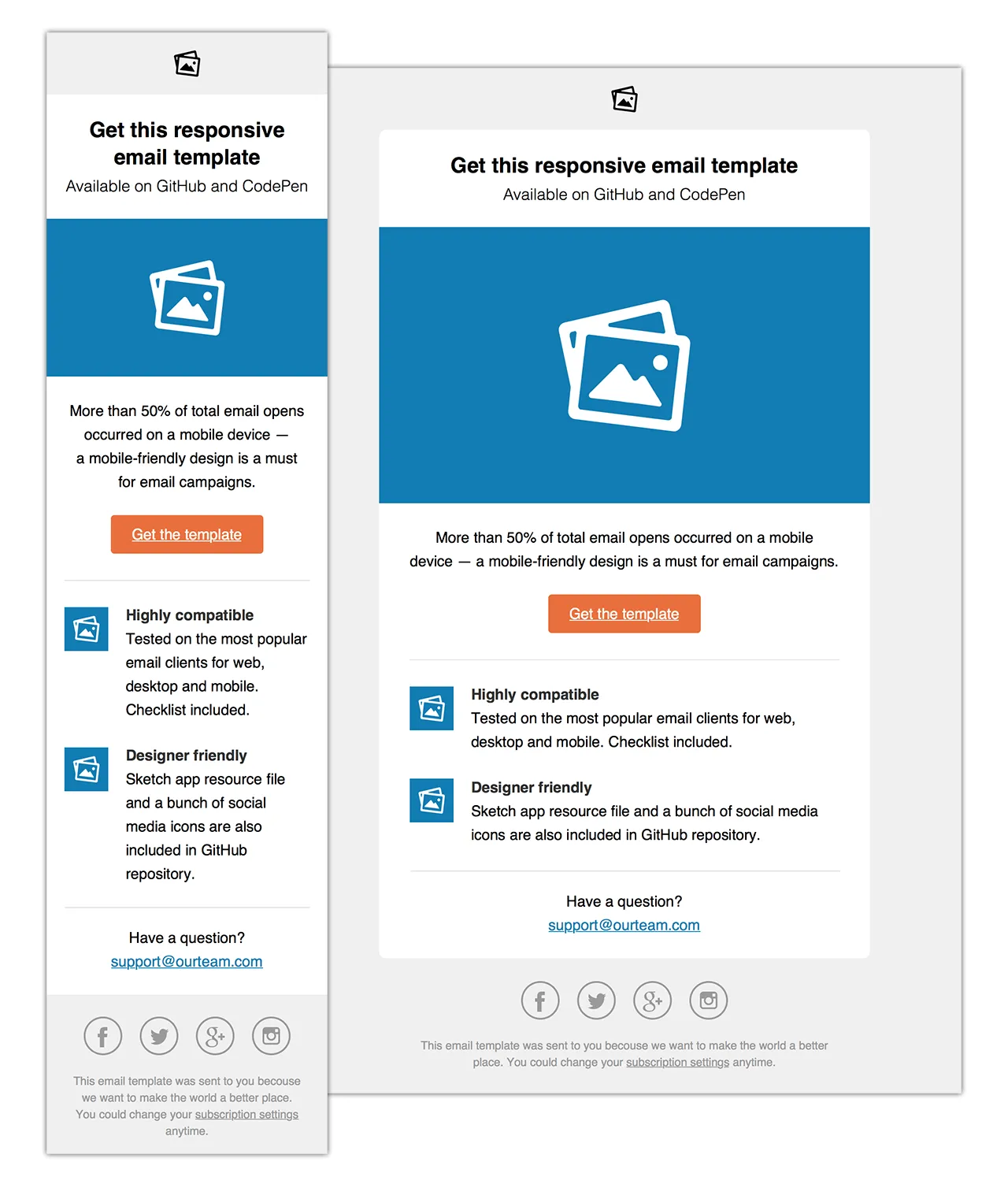
Why Responsive Design is Critical
When you write sales emails or a blog post, responsive email templates are essential because they automatically adjust to the screen size of the device, ensuring an optimal viewing experience for all recipients.
This adaptability is crucial in for mobile-first world, where a significant portion of emails is first opened on a mobile device.
- CSS Media Queries: They play a pivotal role by enabling the application of different styles based on device characteristics, such as screen width, ensuring your email looks good no matter the device.
- Simplified Layouts: Opt for straightforward, clean designs. Complex structures are more prone to display issues across different clients.
- Testing Across Platforms: Utilize tools like Litmus and Email on Acid to preview how your emails render on various devices and email clients, fine-tuning as necessary.
Supporting Data: According to Litmus, mobile opens accounted for 46% of all email opens, underscoring the importance of responsive design for reaching your audience effectively.
Tools for Crafting Free HTML Email Templates
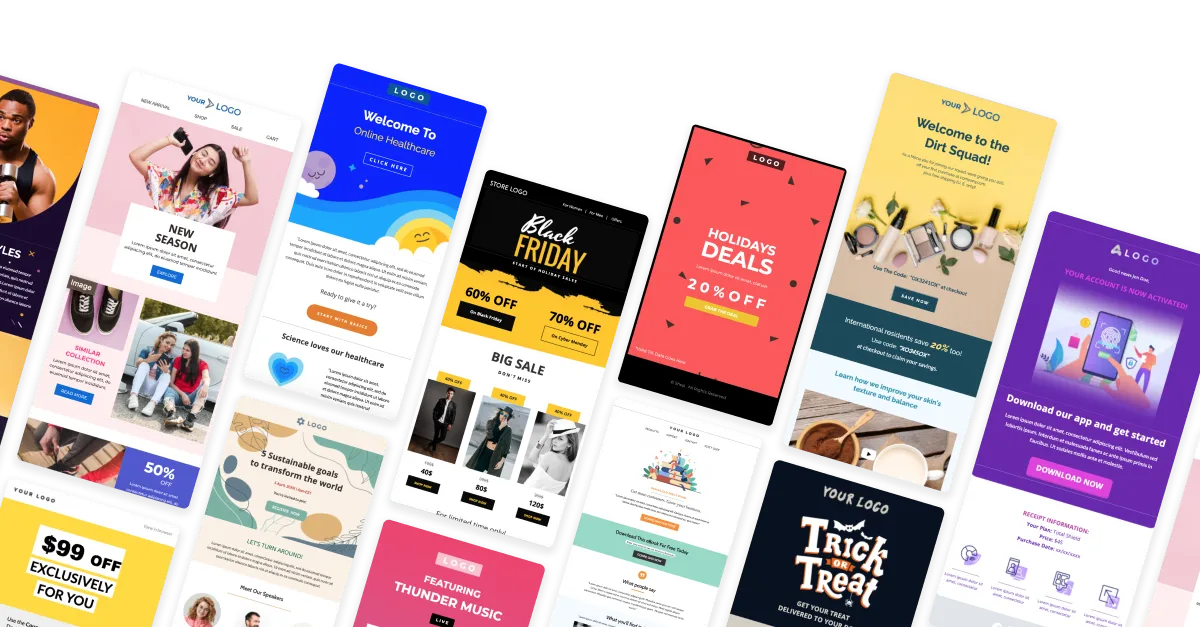
The right tools can simplify the process of creating responsive and visually appealing email templates without needing extensive coding knowledge.
Recommended Tools:
- Mailchimp’s Email Builder: Known for its ease of use, Mailchimp offers customizable, responsive templates that ensure compatibility across email clients.
- BEE Free: Features a user-friendly drag-and-drop interface, offering a variety of responsive templates to kickstart your design process.
- Stripo.email: This tool allows for quick responsive email design and integrates easily with most ESPs, facilitating a smooth design-to-send workflow.
Why These Tools?
They democratize email design, allowing a sales rep and marketers to create high-quality, responsive emails without deep technical expertise.
The emphasis on intuitive design interfaces and pre-designed templates helps save time and resources while ensuring high standards of email design are met.
Ensuring Brand Consistency and Accessibility
Brand Consistency: Your email templates should be an extension of your brand identity, incorporating your brand’s colors, fonts, and aesthetics. This consistency reinforces brand recognition and trust among your audience.
Designing for Accessibility: Making your emails accessible widens your reach and enhances user engagement. Simple measures, like using sufficient contrast and clear CTAs, can make a significant difference.
Strategies to Prevent Sales Template Emails from Landing in the Spam Folder
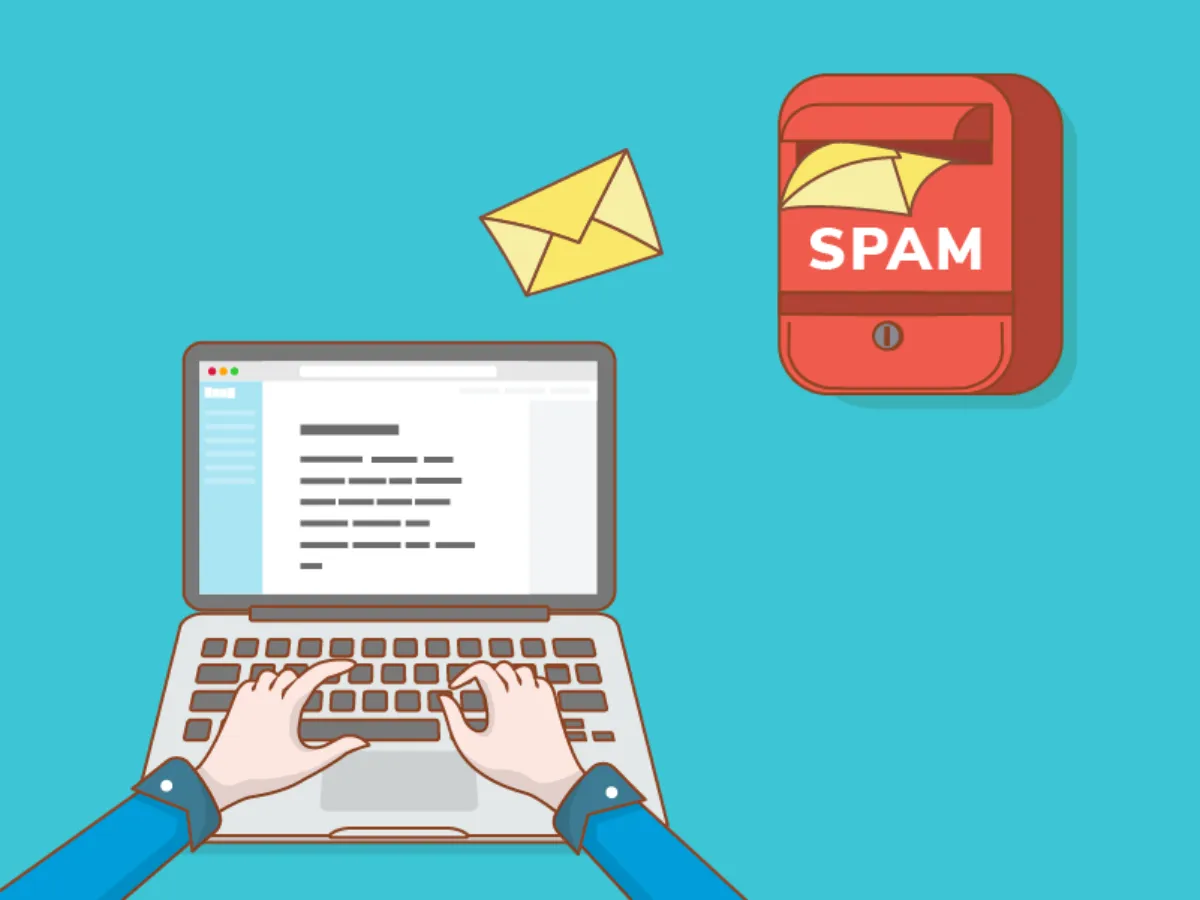
Ensuring your sales emails reach the intended inbox is important for the effectiveness of your email marketing efforts.
Avoiding the spam folder is not just about following rules; it's about having a positive engagement with your audience.
Clean Mailing List
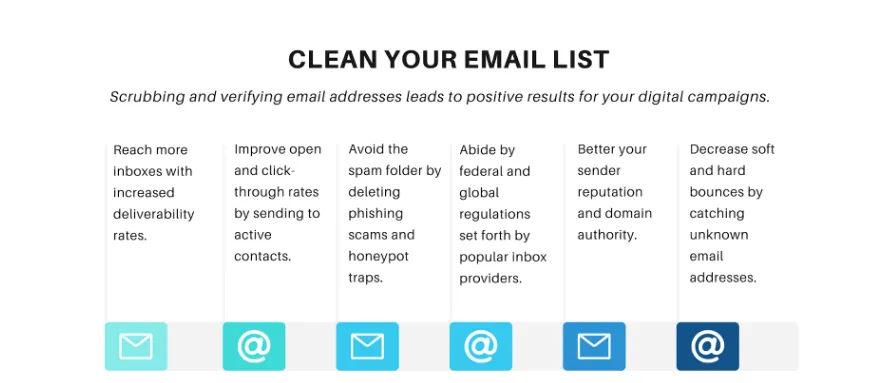
- Why It Matters: A clean list ensures higher engagement rates, as your emails are sent to interested and active subscribers.
- Regular Cleansing: Remove inactive users and incorrect addresses to maintain email health.
- Double Opt-In: Confirms subscriber interest, reducing spam flags.
Personalization and Segmentation
- Why It Works: Personalized emails resonate more, making recipients less likely to mark them as spam.
- Use Recipient's Name: Increases email open rates.
- Segment Audience: Tailor messages to fit the specific interests of different audience segments.
Subject Line Optimization
- The Importance: The first line of defense against being marked as spam.
- Avoid Trigger Words: Words like "free" can increase the chances of being filtered into spam.
- Accurate Representation: Ensures the content meets the recipient's expectations, reducing bounce rates.
Content Quality
- Why Quality Matters: High-quality content is engaging and adds value to the recipient, making it less likely to be ignored or marked as spam.
- Balance Text and Images: Ensures emails are accessible and engaging.
- Professional Layout: A clean design aids readability and helps avoid spam filters.
Sending Frequency
- Impact on Engagement: Too many emails can overwhelm recipients, leading to unsubscribes or spam complaints.
- Consistent Schedule: Builds anticipation and trust, improving open rates.
Use of Reputable ESP
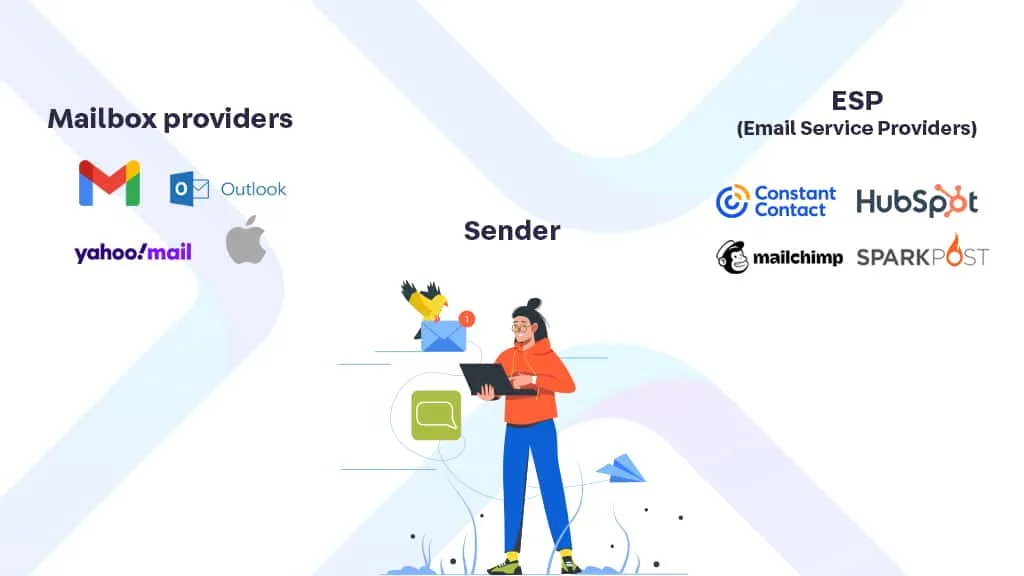
- Why Choosing Right Matters: A reputable ESP can significantly improve your email deliverability.
- Monitor Sender Reputation: Keeps your emails landing in inboxes.
Unsubscribe Link Inclusion

- Legal and Ethical Consideration: It's both a legal requirement and good practice.
- Easy Opt-Out: Reduces frustration and spam complaints by allowing an easy way to stop receiving emails.
Adherence to Regulations

- Why Compliance is Key: Following laws like CAN-SPAM and GDPR protects your business and respects the recipient.
- Regulatory Compliance: Ensures your email marketing is both effective and legal.
Email Testing
- Ensuring Deliverability: Before sending out a campaign, testing can identify potential issues.
- Spam Checkers and A/B Testing: Helps refine your strategy for better engagement and deliverability.





.webp)

